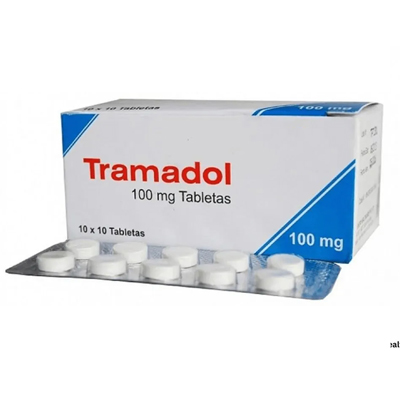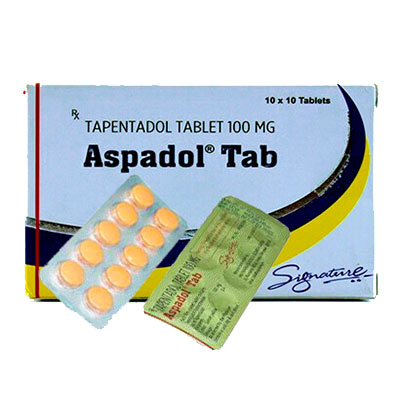Description
What is Tramadol?
Tramadol is a widely prescribed pain relief medication used to treat moderate to moderately severe pain. It belongs to a class of drugs called opioid analgesics, which work by altering the way the brain perceives pain. Tramadol is commonly used when over-the-counter painkillers like ibuprofen or paracetamol are not effective enough, and it is sometimes used as part of long-term pain management plans for chronic conditions.
Tramadol is available in various forms, including immediate-release and extended-release tablets, capsules, and injections. One of the more frequently used doses is Tramadol 100mg, especially for patients dealing with ongoing or post-surgical pain. It is considered a prescription-only medication and is classified as a controlled substance in many countries due to its potential for misuse, addiction, and dependence.
How Tramadol Works?
Tramadol relieves pain by acting on the central nervous system. It binds to mu-opioid receptors in the brain and spinal cord, which are part of the body’s natural pain control system. By activating these receptors, Tramadol blocks the transmission of pain signals and helps reduce the feeling of pain.
In addition to its opioid action, Tramadol also affects two important neurotransmitters in the brain: serotonin and norepinephrine. These chemicals help regulate mood and pain perception. Tramadol prevents the reabsorption (reuptake) of these neurotransmitters, making them more available in the brain and enhancing its overall pain-relieving effect. This dual action sets Tramadol apart from many other opioids.
Uses of Tramadol
Tramadol is used to treat a wide variety of pain conditions. It is effective for both acute pain (short-term, sudden pain) and chronic pain (long-term, persistent pain). Some common conditions where Tramadol may be prescribed include:
- Post-operative pain (after surgery)
- Injury-related pain (e.g., fractures or sprains)
- Chronic back pain
- Osteoarthritis
- Fibromyalgia
- Neuropathic pain (nerve pain)
- Dental pain (in some cases)
Doctors usually start with a lower dose and increase gradually, depending on the patient’s response and the severity of the pain. Extended-release formulations are used when round-the-clock pain relief is needed.
Forms and Dosage
Tramadol is available in various forms:
- Immediate-release tablets: These provide quick relief, usually taken every 4–6 hours.
- Extended-release tablets or capsules: Designed for 24-hour relief, taken once daily.
- Injections: Used in hospitals for rapid pain control.
- Oral drops and dissolvable tablets: Sometimes used for people who have trouble swallowing.
Dosages may vary based on the patient’s condition, age, weight, and kidney/liver function. Common starting doses for adults are 50mg to 100mg every 4–6 hours as needed, not exceeding 400mg per day.
Side Effects of Tramadol
Like all medications, Tramadol can cause side effects. These may vary from person to person and can be mild or severe depending on the dosage, duration, and individual health.
Common Side Effects:
- Nausea or vomiting
- Constipation
- Drowsiness
- Dizziness or lightheadedness
- Dry mouth
- Sweating
- Headache
These usually go away as your body adjusts to the medication.
Serious Side Effects (Seek medical help):
- Difficulty breathing or slowed breathing
- Seizures
- Rapid heartbeat
- Confusion or hallucinations
- Severe allergic reaction (rash, itching, swelling)
- Serotonin syndrome (symptoms include agitation, fever, muscle twitching)
- Addiction or withdrawal symptoms
Always inform your doctor if you experience any side effects, especially if they worsen or become bothersome.
Tramadol and Addiction
Although Tramadol is considered to have a lower risk of addiction compared to stronger opioids like morphine or oxycodone, it can still be habit-forming, especially with long-term use or high doses. The risk of addiction is higher in people with a history of substance abuse or mental health conditions such as depression or anxiety.
Symptoms of Tramadol dependence may include:
- Craving the drug
- Needing higher doses for the same effect
- Withdrawal symptoms when stopping suddenly (e.g., sweating, chills, anxiety, nausea, shaking)
To reduce the risk of addiction, Tramadol should be taken exactly as prescribed, and not for longer than recommended.
Precautions and Interactions
Before starting Tramadol, it is important to tell your doctor about your medical history and any medications you are currently taking. Tramadol should be used with caution in people with:
- Breathing problems (asthma, COPD)
- Kidney or liver disease
- Epilepsy or a history of seizures
- Depression or mental health conditions
- Alcohol or drug addiction
Tramadol should not be taken with alcohol or other central nervous system depressants (like sleeping pills, anti-anxiety drugs, or other opioids), as this can increase the risk of respiratory depression or overdose.
It also interacts with antidepressants like SSRIs or MAO inhibitors, which can increase the risk of serotonin syndrome, a potentially life-threatening condition.
Is Tramadol Safe During Pregnancy?
Tramadol is generally not recommended during pregnancy or breastfeeding, as it can pass into breast milk or affect the unborn baby. In newborns, it may cause withdrawal symptoms or breathing problems. Women who are pregnant or planning to become pregnant should talk to their doctor about safer alternatives.
How to Take Tramadol Safely?
To use Tramadol safely:
- Always follow the prescribed dosage and timing.
- Do not increase your dose without consulting your doctor.
- Avoid alcohol and recreational drugs while taking Tramadol.
- Do not drive or operate machinery if you feel drowsy.
- Store it out of reach of children or anyone else who might misuse it.
- Do not stop taking Tramadol suddenly — reduce the dose gradually under medical supervision.
Conclusion
Tramadol is a powerful and effective pain relief medication used for various conditions involving moderate to severe pain. It works by affecting both pain receptors and brain chemicals, making it unique among opioid medications. While it can be highly beneficial when used properly, it must be taken with caution due to its potential side effects and risk of addiction.
Anyone considering or currently using Tramadol should stay in close contact with their healthcare provider to ensure safe, effective, and responsible use. When managed correctly, Tramadol can significantly improve quality of life for people living with chronic or acute pain.



Reviews
There are no reviews yet.